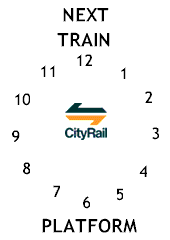| Faulconbridge railway station and Post Office were
established on Henry Parkes' initiative. He also built walking tracks in the nearby
gullies. Other prominent early land owners included Sir James Martin, Sir Alfred Stephen,
& Dr Charles Badham. Faulconbridge has one of two remaining public level crossings
in the Blue Mountains, and also a private one.
Timber was once an important part of the local economy. The remains of a
cable railway & sawmill can still be found in the bush.
World's Best Climate?
Faulconbridge is said to have the world's most equitable climate. More
info...
Today
Today, Faulconbridge is a quiet residential area, a satellite village of Springwood.
Points of interest are listed on a sign on the railway station footbridge. They include
the Prime Minister's Corridor of Oaks, where every Prime Minister of Australia (or a
family member) has the honour of planting an oak tree, and, just across the road, Jackson
Park with it's children's playground and an large open area suitable for ball games. From
here, you can take a bushwalk down Sassafras Gully.
Henry Parkes' grave is just south of the station, & the lily pond can be found
between highway & railway just west of the station.
Norman Lindsay was an artist who gained notoriety for his paintings & sculptures of
naked women. He is also famous for his classic children's book 'The Magic
Pudding', & had a love of model ships. Today, his home is operated as a museum & gallery, & is clearly signposted from the highway. (Take Grose Rd, then Chapman
Ave).
The Grose River may be reached via a fire trail which runs from the end of Grose Rd to
Faulconbridge Point lookout. It is closed to motor vehicles. From the lookout, a path
descends steeply into the gorge.
Commuting
Commuter carparks are located at Faulconbridge & Springwood stations. The highway
is now 4 lanes from the Woodford railway station to the M4 motorway, with widening underway
at Linden. Faulconbridge's 60km/h zone (on the highway) is a favourite for radar. |



